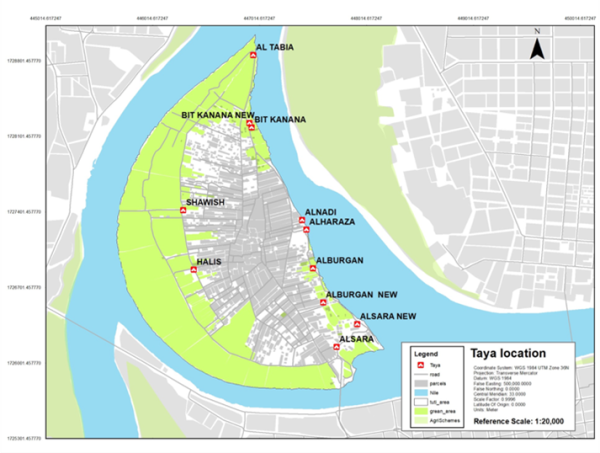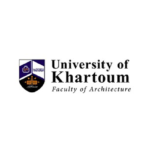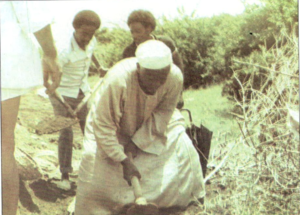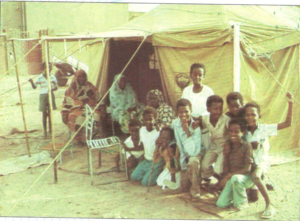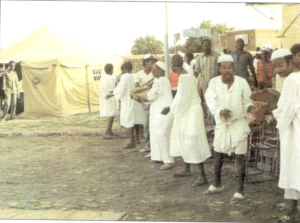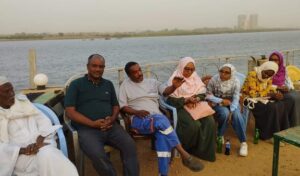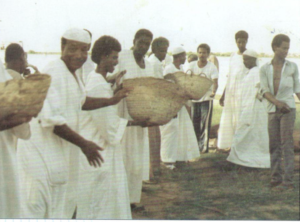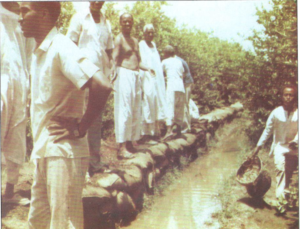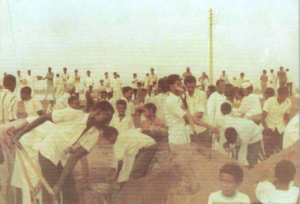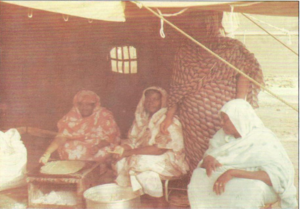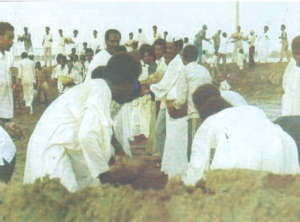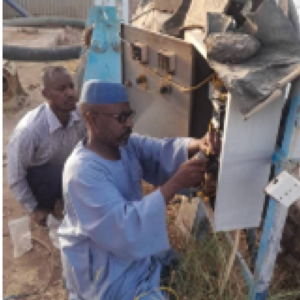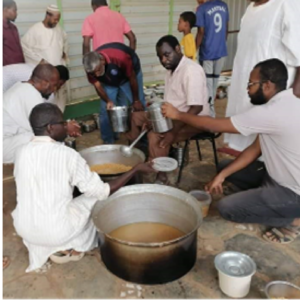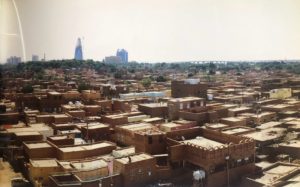
Heritage Empowered Action for Resilience in Tuti Island
(HEART)
PRESERVING HERITAGE, ENHANCING RESILIENCE

Building local capacity and strengthening resilience by using heritage and local knowledge to enhance preparedness and respond to climate-induced hazards in multi-crises environment
National and international policies for climate action and disaster risk reduction (DRR) lack the integration of cultural heritage and practices at the assessment, preparedness and response levels. Traditional practices play a strong role in reducing loss and damage, and improving resilience for many vulnerable communities not only towards weather and climate related risks but also towards socio-economic shocks as demonstrated by Tuti-Island during the armed-conflict. HEART project advocates for recognizing, protecting and drawing on heritage as an asset for resilience, addressing both “the needs of indigenous peoples” and “the role that indigenous, traditional and local Knowledge can play in tackling disaster risk.” The project aims to enhance the resilience of Tuti-Island community against flood-risks by protecting and strengthening their cultural heritage and customary practices of flood monitoring and mitigation known as “Al-Taya.” Al-Tayas are multi-disciplinary, well-organized community-based teams that utilize indigenous knowledge to anticipate and mitigate floods, including forecasting, monitoring and traditional early-warning methods. Al-Taya practices, passed down through generations, have played a significant role in protecting the island from annual floods over the years. The project documented how this knowledge is used to reduce, prepare for, and respond to disasters and risk, including the conflict which erupted in april-2023. The project also aims to demonstrate how cultural heritage can enhance the effectiveness of DRR initiatives; Therefor, fostering community resilience while honoring and preserving indigenous wisdom locally, and serving as a model for similar initiatives globally.
Project Background
The project was implemented between November 2022 and November 2023 under the International Centre for the Study of the Preservation and Restoration of Cultural Property (ICCROM)’s capacity development initiative, Net Zero: Heritage for Climate Action. It was one of five field projects showcasing transformative actions integrating heritage conservation, climate action, and community resilience. The project consortium was led by the Sudan Urban Development Think Tank, in collaboration with the Faculty of Architecture at the University of Khartoum and Studio Urban.
The original field-project idea involved documenting and recording Al-Taya Practice of Tuti Isalnd and had also envisioned activities in the field to strengthen the Tayas and to identify and develop physical measures to reduce the impacts of future floods and other climate-related impacts, as well as to carry out further climate change risk assessments and projections to increase climate-related data. Unfortunately, the armed conflict that broke out in Sudan in April 2023 forced the team to reconsider the project plan, objective, and strategy. Project design, approach, and methodology had to be reviewed and rethought in view of the new situation. Aspects such as insecurity, lack of basic resources, disruption of livelihoods, forced displacement, loss of life, and deliberate destruction of infrastructure, temporarily moved aside the climate concerns. At the same time, Our team members, either based in the country or abroad, had to deal with the tragedy at a personal level.
The redesigned field-project was titled HEART – Heritage Empowered Action for Resilience in Tuti-Island: Strengthening heritage-based and community-led climate resilience during conflict through joint action. The project plan shifted towards a community-focused strategy, aiming to first understand how the current situation on the ground was evolving, and particularly how it was affecting the local community, as well as the Taya system. This was specifically concerning in terms of capacity to respond to the upcoming flood season.
The main project objectives focused on:
-
-
- gathering information and documenting Tuti community’s knowledge of the Taya system in a pedagogic format to pass on to future generations.
- Strengthening social cohesion in the face of both the ongoing conflict, and the seasonal floods, and;
-
Specifically, the activities designed and implemented under the HEART project focused on seeking:
-
-
- Short-term impact:
-
- Building local capacity to strengthen resilience by using Tuti local knowledge and heritage to enhance preparedness and respond to climate-induced hazards in multi-crises environment.
- Serving as an exercise to gather Tuti community members together and strengthen social cohesion in the face of the ongoing conflict.
-
-
- Medium and long-term impact:
-
- Disseminating and creating awareness on the Taya heritage and the legacy from Tuti Island in managing floods with their traditional knowledge.
Inspiring and helping other communities across the world that may be experiencing similar challenges, by sharing the story of resilience from Tuti community.
Al-Tayas of Tuti Island
Tuti Island is Located at the confluence of the White and Blue Niles, at the heart of Sudan’s capital, Khartoum. The location is highly volunerable to Nile flooding, however, over the past 500 years, The community of inhabitants of Tuti Island (Tawatas), have learned to live in harmony with the Nile and reduce flood risk. They have developed an indigenous early warning and flood mitigation system called Al-Taya which refers to both the lookout locations strategically positioned to warn residents of impending floods and the teams responsible for the flood monitoring and defense at each lookout point. Each Taya serves its adjacent neigbourhood and is also served by it. During flood season, the locations of Al-Tayas become central logistical meeting-points for the community-members and support services to coordinate flood protection measures.
Al-Tayas could be best described as “a multi-disciplinary, well-organized and coordinated community groups of actions, which include early fundraising, community mobilization, establishment of watch points, activation of traditional early warning means, construction of embankments, and coordination and management to help those who are flood stricken or those whose properties had to be demolished for rescue and or as a response to warning signals” (UNDRR, 2015). Through this traditional, low-cost, low-tech system and with very little intervention from local authorities, Tawatas successfully faced remarkable disasters such as those recorded in 1878, 1924, 1946 (which marked an inflection point in the history of the island), 1964, 1977, and 1988 (Davies, 1994). likewise in 2013, 2014, 2020 (the highest ever recorded) and 2022 which caused great casualties elsewhere in the country, but during which there were no human losses reported on Tuti. In 2015 their efforts were praised and the island community was named a Champion of Disaster Risk Reduction in 2015 edition. However, Tuti Island is witnessing several environmental changes and shifts, due to climate change, demographic variations, rapid urbanization, a fluctuating economy, and more recently, an ongoing armed conflict, all of which are increasing the risks associated with the annual flooding, threatening the community and its traditional knowledge and practices.


Taya teams building flood barricades during the flood of 1988 (left) and the flood of 2020 (right), Photo Credits: right. Left: Resilience in Urban Sudan Project 2020
Learn more about Al-Tayas here
Project activities (2022-2024)
Situation Analysis and Data Collection to build a ‘climate story’ for Tuti-Island, highlighting the root causes of the prevalent climate-related risk and assessing the sustainability of Tuti’s indigenous knowledge to mitigate risk in different climate change scenarios. Activities included desk/field research, semi-structured interviews with knowledge-bearers, and focus-group discussions. innovative methods were used such as the Story Circle and al-Taya School to engage the community, capturing their stories, memories and knowledge of al-Taya.
Knowledge Co-production, sewing together oral histories from the community with the outputs of the scientific study to co-produce a guideline-document with the community called “Lessons from Tayas.” The guide is presented in simple pedagogical format to train future Taya team members and share knowledge with other communities facing similar challenges. A video documentary was also produced in collaboration with a local Tuti-based filmmaker.
Studying the effects of the armed conflict on the Heritage: During the conflict which erupted in April-2023, during project implementation, the team studied how the community and Tayas were affected. This provided valuable insight into how the Tayas adapted to the changing risks and pressing community needs and continued to serve as focal points for community action, managing resources, distributing meals, water, and essential supplies to the affected community.
Dissimination and knowledge sharing, an symposium and an international virtual conference were held to present the project outputs, foster discussion with international experts in climate change, conflict, and culture, and advocate for the inclusion of heritage in global climate action. In addition to that, an article has been submitted for publication.
The project outputs are:
- Producing the guideline document (Lessons from Taya: A Heritage-based, community-Led Model for Flood Mitigation) documenting the Taya practices in a pedagogic format to pass on to future generations and other communities facing similar challenges.
- A Video Documentary, produced in collaboration with a local filmmaker from Tuti-island featuring the story of Tuti and the Tayas, including photographs, audios, and testimonials from islanders.
- An article submitted to the special issue of the Journal of Cultural Heritage Management and Sustainable Development, “Sudan’s climate-culture story: a project with HEART – Heritage Empowered Action for Risk in Tuti.”
- An online webinar (28 November 2023) to present the challenges and progress of the project, and to foster discussion with international experts in climate change, conflict, and culture.
- An international virtual conference (25-27 March 2024) highlighting the integration of culture into sustainable and resilient human responses to climate change while safeguarding heritage.
Project spin-off (DARAJA-TUTI ISLAND 2024-2025) – Expanding the impact
Upon project completion, a small accelerator funding was raised to develop and field-test viable strengthening solutions based on Tuti’s indigenous knowledge and supported by climate science. The spin-off project, DARAJA-Tuti Island, particularly addresses the increased fragility caused by the armed conflict and the siege on Tuti Island, which blocked access to humanitarian assistance and external aid, further necessitating the need to support community-led action. The aim is to strengthen the Tayas by providing reliable, timely, and easy-to-understand location-based weather and climate information (WCI) and early-warning. The WCI service will be co-designed with the Sudan Meteorological Authorities, media operators, humanitarian organizations, community representatives, and CBOs. Together, they will shape the information provided and the way it is communicated. They will also jointly devise a strategy to disseminate the information and receive feedback from the community. The feedback will be used to improve the service and allow it to better adapt to the changing context. Activities include;
Information ecosystem mapping to identify key actors in the weather and climate information services and the dissemination channels which the community use to access and share information and early warnings.
Co-design/Co-production workshops with WCI providers, media, humanitarian-organizations, community representative, CBOs to co-design and co-deliver the service.
Training for translators/ disseminators of WCI to enable them to understand and interpret the WCI, and to translate and share with the community. Also, Training for community influencers, activist, CBOs and other users as required to gain knowledge/ skills relating to using the information to take actions
Piloting the service during the 2024 flood-cycle, and incremental development of the service based on user feedback.
DARAJA-Tuti Island is implemented in collaboration with Resurgence, Sudan Meteorological Authorities (SMA) and the IGAD climate prediction and Application Center (ICPAC).
Project Spin-off (Daraja-Tuti island 2024-2025)- expanding the impact
Upon project completion, a small accelerator funding was raised to develop and field-test viable strengthening solutions based on Tuti’s indigenous knowledge and supported by climate science. The spin-off project, DARAJA-Tuti Island, particularly addresses the increased fragility caused by the armed conflict and the siege on Tuti Island, which blocked access to humanitarian assistance and external aid, further necessitating the need to support community-led action. The aim is to strengthen the Tayas by providing reliable, timely, and easy-to-understand location-based weather and climate information (WCI) and early-warning. The WCI service will be co-designed with the Sudan Meteorological Authorities, media operators, humanitarian organizations, community representatives, and CBOs. Together, they will shape the information provided and the way it is communicated. They will also jointly devise a strategy to disseminate the information and receive feedback from the community. The feedback will be used to improve the service and allow it to better adapt to the changing context. Activities include;
Information ecosystem mapping to identify key actors in the weather and climate information services and the dissemination channels which the community use to access and share information and early warnings.
Co-design/Co-production workshops with WCI providers, media, humanitarian-organizations, community representative, CBOs to co-design and co-deliver the service.
Training for translators/ disseminators of WCI to enable them to understand and interpret the WCI, and to translate and share with the community. Also, Training for community influencers, activist, CBOs and other users as required to gain knowledge/ skills relating to using the information to take actions
Piloting the service during the 2024 flood-cycle, and incremental development of the service based on user feedback.
DARAJA-Tuti Island is implemented in collaboration with Resurgence, Sudan Meteorological Authorities (SMA) and the IGAD climate prediction and Application Center (ICPAC).

The HEART Project embraced a participatory approach that prioritized building strong relationships with the community of Tuti Island, ensuring their active involvement, ownership, and support throughout the project. Through facilitating various engagement activities and tools, we fostered collaboration, respect for heritage, and alignment with community concerns.
Teaming Up with the Community
It was crucial for the project to be a collaborative effort, respectful of the heritage, and aligned with community concerns. To support this, two community members were part of the core project team ensuring that the perspectives of women and youth were considered in all activities. The team also leveraged existing community networks, leaders and influencers to disseminate information and gather feedback, this was highly valuable especially after the break-out of the armed-conflict which interrupted direct interaction with the community.
WhatsApp Groups
Three thematic WhatsApp groups were established to facilitate two-way communication, discussion and informal conversation with knowledge-bearers and community groups including the diaspora. This allowed members to share updates, insights, and relevant information promptly. The groups became a source of solidarity and support after the outbreak of the armed-conflict, enabling members to remain connected with other members who were still in the Island or fled to other locations.
Focus Group Discussions (FGD)
Three FGD sessions were conducted with Taya team members, the broader Tuti community, and Tuti women. These discussions aimed to understand customary flood management practices, gather community perceptions of the Taya system, and capture the unique perspectives, roles, capabilities, and vulnerabilities of Tuti women in disaster management respectively.
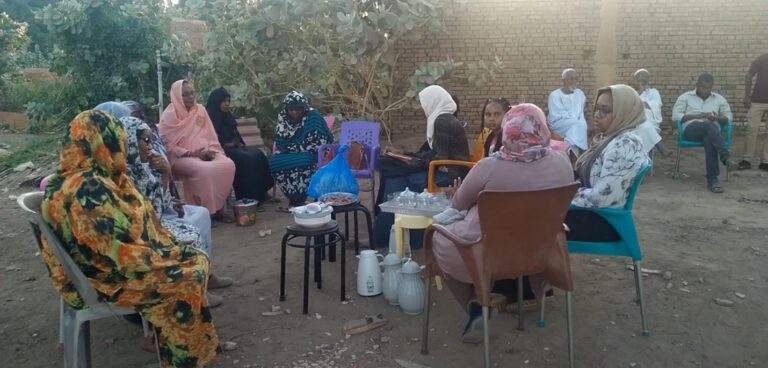
The Story Circle
This innovative data collection method gathered narratives from several participants to explore common experiences. Women and men from Tuti, including Taya members, shared memories, anecdotes, and stories. Using specific questions and audio/visual prompts, we captured participants’ experiences with past floods and their knowledge of the Taya system.
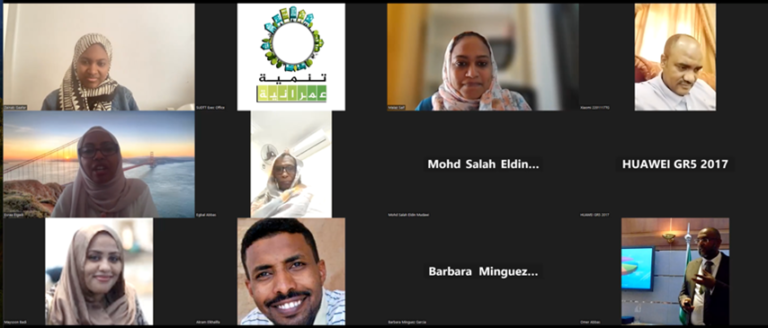
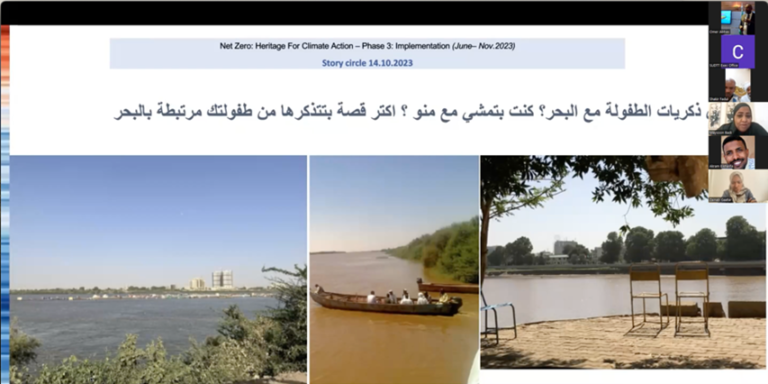
During the online story circle, different audio-visual prompts were used to recall participants’ memories and experiences. The session was also an opportunity for different community members to connect with one another after the break-out of the armed-conflict.
Al-Taya School
The interactive webinar-like event, focused on discussing technical information about the Taya system. Although not a formal school, the name inspired a sense of teaching and learning within the community. The objective was to develop a systematic explanation of the Taya to better communicate this knowledge to future generations and other communities.
Co-design/Co-production
The community played a leading role in producing the Taya guideline through their involvement in the previous activities, followed by a process of feedback and consultations. Phase II of the project engages the community in co-designing strengthening interventions for al-Tayas with key DRR stakeholders, ensuring a collaborative and inclusive approach to enhancing disaster resilience.
Testimonials

Professor Robert Brown
“At the heart of Tuti resident’s collective action is the Sudanese cultural tradition of Nafir and a spriti of solidarity an generosity towards others. What is also remarkable is the sense of Nafir present in the team itself.”

Mark Harvey
“By studying in depth and highlighting the dynamics and properties of the historically-embedded and community-owned Sudanese flood Early Warning System, the ‘Taya’ system of Tuti Island, SUDTT has managed to give prominence to the importance of traditional disaster risk reduction (DRR) mechanisms in community-based climate resilience efforts. Notably, this has been undertaken by SUDTT in a way that has galvanized the attention of the rapidly growing global community of climate adaptation, climate resilience, and climate DRR experts.”

Dr Mohamed Salah Eldin Mudawi
“With appropriate funding and support, this project could amplify the utilization of indigenous practices and experiences for the benefit of numerous other similar communities.”

Barbara Minguez Garcia
“I can’t express enough how proud I am of this team of professionals, and how much I admire their dedication and resolution, together with the commitment of the local community members in Tuti Island, who joined forces to face the very adverse situation and continue preserving and using their traditional knowledge to increase their own resilience.”

Faith Chivava
“A standout feature of the HEART project is its comprehensive engagement across all levels of stakeholders—from grassroots participants to policymakers at local, national, regional, and international tiers.”
partners
International Partners
Local Partners



